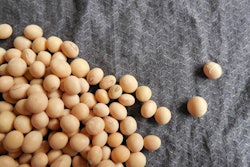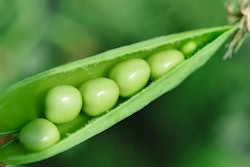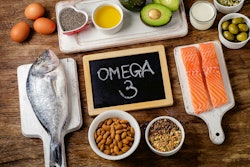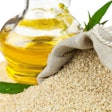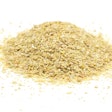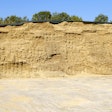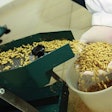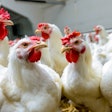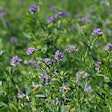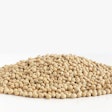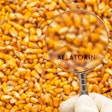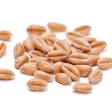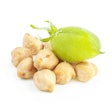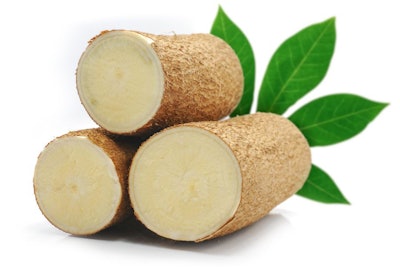
Cassava is a crop very rich in starch, but it can also be the source of one of the most potent poisons: hydrogen cyanide.
Cassava (Manihot esculenta) is a perennial plant native to South America. It is the third largest energy source for humans, just behind corn and rice, globally.
Of course, it holds a higher position in certain parts of Africa and Asia, where more than half a billion people rely on cassava for their daily energy intake. The top-producing countries are Nigeria and Thailand, followed by Brazil, Indonesia and Ghana. Cassava production continues to expand in Asia and Africa, and also in Latin America. This is not only because of increasing demand as an energy staple, but also because of increasing demand for animal feed, industrial starch uses, and as a substrate for bioethanol production. After all, cassava contains more than 70% starch, making it a very rich source of energy.
Why isn’t cassava used more in animal feed?
The cassava plant produces three main products: tuber chips (flesh), tuber peels and leaves. The peels and leaves contain more fiber and protein, but it is the flesh of the tuber that contains the most important commodity: the starch. We shall focus on the cassava chips, which are the most industrially available for the moment.
The main problem of raw cassava tubers is their high concentration of cyanogenic glucosides (with peels containing more than the flesh). These compounds exist as a natural defense mechanism for the plant and they become activated once the tissue becomes damaged. The main cyanogenic glycoside of cassava is linamarin (the same as in linseed) making up more than 90% of total such compounds in the tuber. Once linamarin is activated by the enzyme beta-glucosidase, it releases prussic acid (hydrogen cyanide, HCN) which is a highly volatile substance characterized by the odor of bitter almonds. It is highly toxic to animals when consumed at high enough quantities, causing asphyxia and death. At lower levels, it can be detoxified internally by the enzyme rhodanase into thiocyanate (sulphur-nitrogen containing compound) provided that there is adequate methionine available to function as a sulfur donor. Thiocyanate, although less toxic, can also cause enough problems as it is a potent goitrogen, such as in the case of glycosinolates in rapeseed meal.
To prevent humans and animals from becoming poisoned, raw cassava tubers are first peeled and the flesh is sliced or shred. The resulting “chips” are sun dried (most often used method when destined for animal feed) long enough to allow the volatile prussic acid to evaporate. Complete removal is impossible, but a reduction of at least 90% is considered sufficient for animal feeding. The flesh of sweet cassava varieties contains low levels of hydrogen cyanide (less than 50 mg/kg hydrogen cyanide), but bitter varieties are rather rich (over 200 mg/kg), with certain ones containing more than 1,000 mg/kg. Therefore, knowing the initial variety is important as 90% reduction of 50 mg/kg is substantially different compared to 90% reduction of 200 mg/kg.
Testing is key to correct usage
Testing processed cassava chips is a must before feeding them to all animals, and there are easy and quick methods that can be used for field tests, to be followed by more accurate laboratory tests. Sampling is not to be taken lightly as incorrect procedures will lead to incorrect results, with possible catastrophic repercussions. Not properly testing for hydrogen cyanide content has been the major reason why cassava chips are considered by many feed professionals as questionable for animal feeding. In reality, however, cassava chips low enough in hydrogen cyanide can be used to completely replace all cereals, especially in monogastric animals. This does not apply to ruminants as the rumen microbes can hydrolyze any remaining glucosides releasing thus even more hydrogen cyanide. In practice, however, cassava chips are used to replace only a portion of cereals, depending on hydrogen cyanide concentration (if known) or their origin (if unknown).


